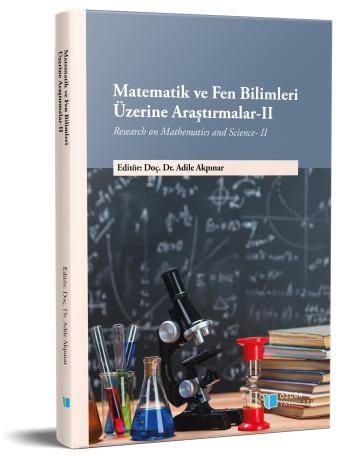
Sonlu Cisimler Üzerinde Golay ve Hammıng Kodları
Şu kitabın bölümü:
Akpınar,
A.
(ed.)
2023.
Matematik ve Fen Bilimleri Üzerine Araştırmalar-II.
Özet
Bu çalışma kapsamında genel olarak şu konulara değinilmiştir. Öncelikle kodlama teorisi hakkında bazı genel bilgilere yer verilmiştir.Kodlama türlerinden bahsedilerek haberleşme sisteminde kodlama teorisinin önemine değinilmiştir. Kodlama teorisi dalında özellikle matematiğin farklı alanları ile bağlantı oluşturarak, iletilecek verilerin transfer sürecinde ve saklanması sürecinde dış etkenler sonucu oluşabilecek tüm bozulmaları engellemek adına çeşitli çalışmalar yapılmıştır.
Golay Kodların tarihçesi ileVoyager Programı kapsamında Satürn ve Jüpitere fırlatılan uzay araçları ileDünya arasında veri iletiminin sağlanması konusunda bu kodların önemine yer verilmiştir. Sonra Golay Kodların tanımı yapılarak İkili ve üçlü Golay Kodların özellikleri üzerinde durulmuştur. İkili Golay Koddijital iletişim sistemlerinde kullanılan bir tür doğrusal hata düzeltme kodu olarak geliştirilmiştir.Daha sonra Hamming Kodların tanımına ve özelliklerine yer verilmiş olup örneklerle açıklamalar yapılmıştır. Bilgisayarda verilerin iletimi esnasında oluşabilecek bozulmalara karşı gönderilen verilere ilave bitler eklenerek hataların tespit edilmesi hatta düzeltilmesi amaçlanmaktadır.Bu çalışmada Golay ve Hamming Kodların temel tanım ve önemli teoremlerine ispatlarıyla birlikte yer verilmiştir.Ayrıca Mükemmel Kod tanımına değinilerek Golay Kodlar ve Hamming Kodların birer Mükemmel Kod olduğu kanıtlanmıştır. Bu kodlar iletişim sistemlerinde oluşabilecek hataların düzeltilmesinde oldukça başarılı sonuçlar vermektedir.

